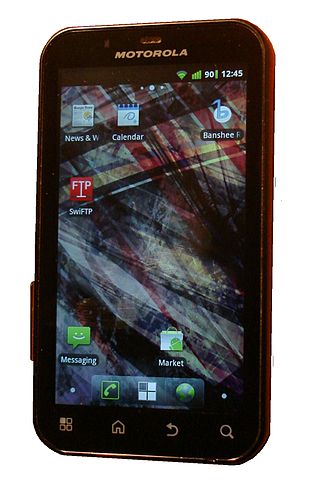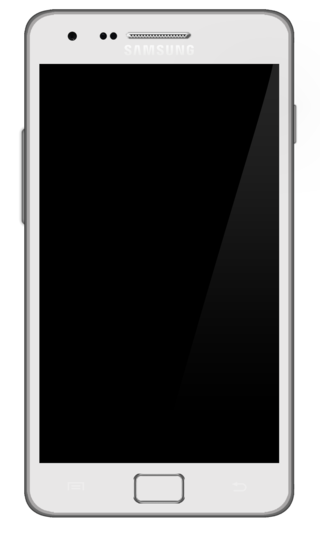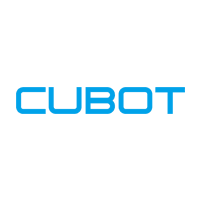Pantech Inc. is a South Korean company that manufactures mobile phones. Established in 1991, its market is mainly domestic with partners in the United States, Japan, China, Europe and Vietnam. In 2012 Pantech was the second best-selling handset maker in South Korea, according to Gartner. In 2013 Samsung Electronics bought a 10% stake in Pantech. Pantech also partners with PCD for specialized phones.

The HTC Dream is a smartphone developed by HTC. First released in September 2008, the Dream was the first commercially released device to use the Linux-based Android operating system, which was purchased and further developed by Google and the Open Handset Alliance to create an open competitor to other major smartphone platforms of the time, such as Symbian, BlackBerry OS, and iPhone OS. The operating system offers a customizable graphical user interface, integration with Google services such as Gmail, a notification system that shows a list of recent messages pushed from apps, and Android Market for downloading additional apps.
The form factor of a mobile phone is its size, shape, and style, as well as the layout and position of its major components.

The HTC Evo 4G is a smartphone developed by HTC Corporation and marketed as Sprint's flagship Android smartphone, running on its WiMAX network. The smartphone was launched on June 4, 2010. It was the first 4G enabled smartphone released in the United States.

The Samsung Galaxy S is a touchscreen-enabled, slate-format Android smartphone designed, developed, and marketed by Samsung Electronics; it is the first smartphone of the Samsung Galaxy S series. It is the first device of the third Android smartphone series produced by Samsung. It was announced to the press in March 2010 and released for sale in June 2010. Due to shortage of Super AMOLED displays, Samsung released a successor to the device called S scLCD or SL and ceased production of the original I9000 model.

The Motorola Defy (A8210/MB525) is an Android-based smartphone from Motorola. It filled a niche market segment, by being one of the few small, IP67 rated smartphones available at the time of its late 2010 release; it is water resistant, dust resistant, and has an impact-resistant screen. An updated version of the original model, Defy+ (MB526) was released in 2011. Other variants were also released before a revival of the Defy name in 2021.
The HTC Evo Shift 4G is a smartphone developed by HTC Corporation and marketed as the concurrent/sequel to Sprint's flagship Android smartphone, running on its 4G WiMAX network. The smartphone launched on January 9, 2011.

The Samsung Galaxy S II is a touchscreen-enabled, slate-format Android smartphone designed, developed, and marketed by Samsung Electronics, as the second smartphone of the Samsung Galaxy S series. It has additional software features, expanded hardware, and a redesigned physique compared to its predecessor, the Samsung Galaxy S. The S II was launched with Android 2.3.4 "Gingerbread", with updates to Android 4.1.2 "Jelly Bean".

The Sony Ericsson Xperia pro is an Android smartphone from Sony Ericsson which was launched in October 2011. The Xperia Pro has a 3.7-inch (94 mm) capacitive touch-screen, slider keyboard, smart phone with mobile BRAVIA engine which optimises the picture and runs at a resolution of 854×480 pixels, a 1 GHz Snapdragon processor, an 8.1 mega-pixel camera, a dedicated Two-step camera key, USB host port, HDMI-out, 512 MB of onboard RAM, and an 8 GB microSD card. The Sony Ericsson Xperia Pro is available in black, silver, or red.
The Motorola Photon Q 4G LTE (XT897) is a smartphone manufactured by Motorola which runs on Sprint's 4G LTE network. The "Photon Q" has a 4.3-inch touchscreen and a 1.5 GHz dual-core processor. It runs the Android operating system and includes a built-in, sliding keyboard similar to the one on the Motorola Droid 4.
The Samsung Galaxy S Relay 4G is an Android touchscreen slider smartphone designed and manufactured by Samsung for T-Mobile USA. It resembles the Samsung Epic 4G in appearance and shares the Epic 4G's screen and camera specifications, but the CPU and other internal hardware is more similar to the Samsung Galaxy S III.
The Samsung Galaxy Pocket Neo is an Android smartphone manufactured by Samsung. It was announced in March 2013 and released in May 2013 as the successor to the Samsung Galaxy Pocket Plus. The handset is still budget-oriented, sporting a larger 3-inch display. Its specifications are similar to that of the Samsung Galaxy Pocket Plus, with only minor upgrades such as the Android 4.1.2 Jelly Bean operating system and the display size. The Samsung Galaxy Pocket Neo, like its predecessors, is still marketed as "Pocket Friendly," because it can be slipped inside pockets easily despite the larger size.

The HTC Desire 610 is an Android-based smartphone designed and manufactured by HTC. It is an affordable smartphone part of the Desire range of mid-range handsets, and was aimed at the same market sector with devices such as the Motorola Moto G, Sony Xperia M2 and Nokia Lumia 735. It was announced on 24 February 2014 at Mobile World Congress 2014 in Barcelona, Spain. It was released in China in March 2014, in Europe starting April 2014 and in Australia on 5 August 2014.

Cubot is a brand of Android smartphones manufactured in China by Shenzhen Huafurui Technology Co., Ltd. The company is based in Shenzhen and was founded in 2012.
HMD Global, also branded as Nokia Mobile, is a Finnish mobile phone manufacturer. The company is made up of the mobile phone business that the Nokia Corporation sold to Microsoft in 2014, then bought back in 2016. HMD began marketing Nokia-branded smartphones and feature phones on 1 December 2016. The company has exclusive rights to the Nokia brand for mobile phones through a licensing agreement. The HMD brand is only used for corporate purposes and does not appear in advertising, whereas the name "Nokia Mobile" is used on social media.
BlackBerry Mobile was a trading name that was used by TCL Communication between December 2016 and August 2020 to manufacture and sell BlackBerry branded devices in all world markets, excluding the regions where BB Merah Putih (Indonesia) and Optiemus Infracom operated.
The Unihertz Jelly is an Android smartphone developed by Unihertz, which billed it as "the smallest 4G smartphone" upon its release in 2017. It was initially developed with a successful Kickstarter project which reached its $30,000 goal in just 57 minutes, and eventually raised over $1.25 million. The Unihertz Jelly Pro is still currently available for sale in over 60 countries, including major retailers.

The Unihertz Atom was released in 2018 as Unihertz's second smartphone model after the Jelly. Initially launched through a similar kickstarter project that reached its $50,000 goal in only 60 seconds. It features a 2.45-inch display, very small by industry standards, and at 108 grams is also very lightweight. It has a dedicated push to talk (PTT) button on its side.

Typewise is a Swiss deep tech company that builds text prediction AI. In January 2022, the company filed a patent for its technology which it claims outperforms that of Google's and Apple's.










